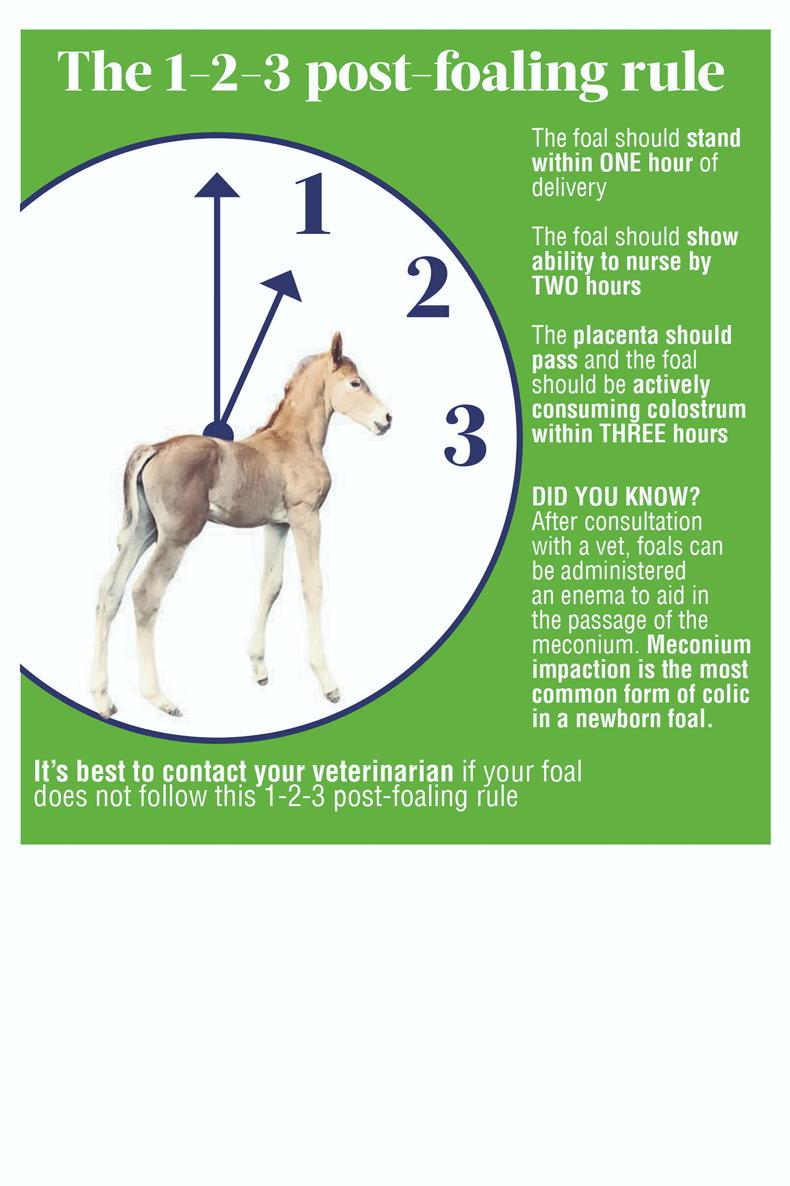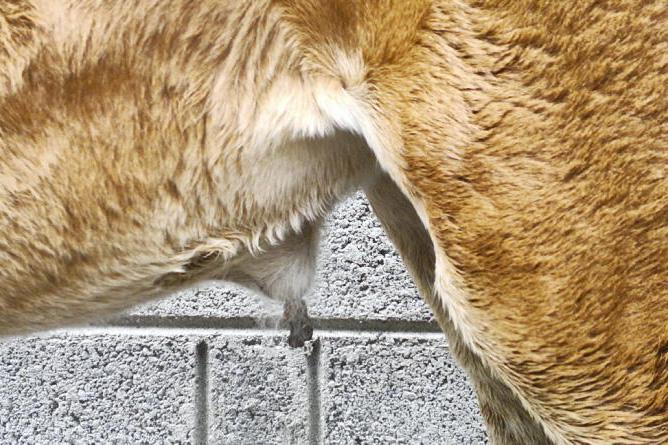Rejection of a foal by its dam is a rare event but it poses significant risk to the foal, due either to a lack of colostrum and nutrition caused by inability to nurse, or injury/death if the mare attacks the foal.
Most cases of rejection occur in the first 12-24 hours post-foaling. It is more common in maiden mares than experienced dams. Hormonal imbalances are suspected to be involved, but there is a lack of clear evidence of a precise cause.
Cases are generally managed by attempts to encourage the mare to modify her behaviour and accept the foal. The level of experience of the people handling the mare and foal is often critical in achieving a good outcome. If you encounter an aggressive dam, it is usually a good idea to seek experienced assistance as quickly as possible, especially given the labour-intensive nature of the management of these cases.
Bonding process
Bonding begins immediately after birth, as the mare sniffs, muzzles and licks her foal and nickers or whinnies at it. As the foal gets to its feet and attempts to nurse, the mare will typically stand still and allow the foal to approach her udder and eventually latch on to a teat and nurse. Mares often turn their head to sniff and lick the foal’s hindquarters as they nurse. Once the foal lies down to rest, the dam stands guard over or close by the foal, and will position herself between it and any perceived threat.
Early signs of rejection may include reduced licking of the foal, a lack of interest in it and moving away as the foal attempts to nurse. More aggressive mares may resort to chasing the foal and can even kick, bite or strike at it.
Rejection rates rise if the foal is sick or weak and requires a lot of human intervention in the immediate post-foaling period, or if the mare and foal have to be separated for veterinary treatment. ‘Dummy’ foals or those that exhibit abnormal behaviours are also at increased risk of rejection.
Checklist
Pain or discomfort on the part of the dam are also important factors to consider. A maiden mare with a very full and distended udder may find the whole experience somewhat overwhelming, and may initially reject the foal’s fumbling efforts to nurse.
Likewise, mastitis or other painful post-foaling conditions may cause the mare to object to the foal’s suckling, especially if it is accompanied by some over-enthusiastic head butts!
Treating the mare with a painkiller and drawing some milk from the udder may alleviate her discomfort. This first milk is high in precious antibodies so don’t waste it – check its antibody concentration and either feed it to the foal or add it to your stash of frozen colostrum.
In mild cases, just holding the mare still and distracting her with some feed may be all that is needed to enable her to relax and accept the foal.
Where possible, carry out all the immediate post- foaling checks and tasks (such as treating the foal’s navel, retrieving and checking the afterbirth, cleaning the stall, etc.) as quickly and quietly as possible and then leave the mare and foal in peace and quiet to promote bonding.
A foaling box camera is a useful way to allow you to monitor them from a distance and intervene if needs be.
If the mare is pinning back her ears, squealing, or threatening to charge or kick the foal as it approaches then more caution is needed.
Placing a bridle or chifney on the mare to enable her to be held and monitored as attempts are made to get the foal to nurse makes it safer, but great care should be taken to avoid any handlers getting injured.
Sedation
The judicious use of twitch and/or sedation can also be tried. Some farms may have a stable with a nursing gate where the mare can be safely restrained while the foal attempts to feed. The mare may need to be muzzled if she tries to bite the foal.
Aggressive mares are best managed carefully by a team of patient and experienced handlers with veterinary intervention to administer pain relief, tranquilisers and/or various hormone treatments on a case- by-case basis. A painstaking and diligent approach is needed and the mare should not be left unsupervised until she appears to have fully accepted the foal.
If no progress is made after a couple of days, the decision may be made to switch the foal on to a foster mare. Efforts to hand-rear the foal are best avoided, due to the numerous medical and behavioural issues that are likely to arise, and the sheer volume of time and resources required.
Once a mare has rejected a foal outright, there is a risk that she will do so with subsequent offspring, so all future births should be closely supervised.
Veterinary surgeon Dr Karen Dunne is a veterinary nursing lecturer at the Dundalk Institute of Technology










SHARING OPTIONS